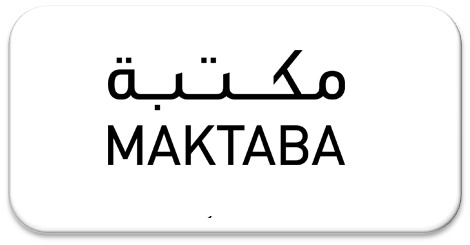TERAPI PASIR HITAM DI DESA GIRI EMAS KECAMATAN SAWAN KABUPATEN BULELENG BALI
Abstract
The rapid development of autem modu modem is not always able to provide total and comprehensive healing to patients Complementing treatment that is popular with the people of Gin Emas Village, Sawan District, Buleleng Regency The chapter in dealing with black fungus therapy chooses therapeutic treatment as an alternative treatment. This can be seen in the beliefs and habits of the community in choosing therapy black pasu when suffering from broken bones. This study aims to describe the process of sexta mechanism of fracture treatment by black sand therapy and to explain the factors behind black sand therapy persisting as health care in the village of Giri Emas. This study uses symbolic interaction theory, health belief model theory and health behavior theory and pressure. The concepts used as guidelines in this research are black pasur therapy, survival, and the medical system. and literature study. Researchers are the main instrument of pre-research which is assisted by using interview guidelines with voice recorders, cameras and tools. The results of the research show that the methods and benefits of treating broken bones are black sand therapy, using massage techniques, massaging, and pulling the broken bones to return them to their original position. Hom aa sand therapy uses sand to clamp broken bones. On the other hand, black paste therapy still survive in the midst of modern medical developments that are increasingly popular. This is caused by several factors, namely the closeness of the patient to using tecami pasiz butam, the patient's cultural background factor that is the same as black sand therapy, the patient's trust factor in pari kiam therapy, the suggestion factor, and factor .
Keywords
Full Text:
PDFReferences
Ainurrafi, Risnah, Azhar, Ulfa. 2019. “Terapi Nonfarmakologi untuk Kontrol Tekanan
Darah pada Pasien Hipertensi: Systematic Review”. Jurnal Publikasi Promosi
Indonesia (MPPKI).
Antonelli, M. and Donelli, D. 2020. Khasiat, Keamanan, dan Tolerabilitas Pijat Aroma dengan Minyak Esensial Lavender: Jurnal Internasional Pijat Terapi & Bodywork.
Dharma, Agus. (2017). Analisis panas pasir hitam sebagai produk Kesehatan di Kecamatan Sawan. Seminar Nasional Sains dan Teknologi.
Dharma, Agus & Mataram, Karnata. (2019). Design of monitoring system and process of healty therapy based on internet of thing. The International Conference on Science, Technology, and Humanity.
Foster, George M. dan Barbara Gallatin Anderson. 1986. Antropologi Kesehatan. Jakarta: Penerbit Universitas Indonesia (UI-Press).
Gagnol, L & Landel, Pierre-Antoine. 2016. Psammotourism: Desert sand as a specific.resource and touristic experience.
Hartanti, Wardana, Fajar, Ari. 2016. “Terapi relaksasi napas dalam menurunkan tekanan darah pasien hipertensi”. Jurnal Imiliah Kesehatan.
Kleinman. 1980. Patients and Healers in the Context of Culture: An Exploration of the Borderland Between Antropology, Medicine, and Psychiatry.Los Angeles London : University of California Press Berkeley
Kalangie, Nico S 1994. Kebudayaan Dan Kesehatan, Pengembangan Pelayanan Kesehatan Primer Melalui Pendekatan Sosio Budaya. Jakarta: Pt Kesaint Blanc Indah Corp
Koentjaraningrat.2009. Pengantar Ilmu Antropologi. Jakarta: Rineka Cipta
Maulana, Nova. 2014. Buku Ajar Sosiologi & Antropologi Kesehatan Yogyakarta: Nuha Medika.
Meleong, Lexy J. 2004. Metodologi Penelitian Kualitatif. Bandung: PT. Remaja Rosdakarya.
Rakhman, Noor. 2013. “Rekayasa Geomedis Pemanfaatan Pasir Pantai Di Pantai Parang Tritis Dan Sekitarnya, Kecamatan Kretek Kabupaten Bantul Daerah Istimewa Yogyakarta”. Jurnal Teknologi Technoscientia, 21-31.. Keperawatan Medikal Bedah Jakarta Salemba Medika
Reeves, Xharlene J,. G. Roux & R.Lokhart (2001)
Suta, Ida Bagus Putra. 2019. “Terapi Pasir Panas (Tapa Sveda) untuk Kesehatan Perspektif Ayurweda”. Widya Kesehatan, 1(1), 18-22.
Trianasari, N.Sparks, B. & Butcher, K. (2018). Uderstanding guest tolerance and the role of cultutral familiarity in hotel service failure. Journal of Hospitality Marketing Management, 27 (1), 21-40.
DOI: https://doi.org/10.29103/jumasi.v1i1.11947
 Article Metrics
Article Metrics
 Abstract Views : 125 times
Abstract Views : 125 times
Refbacks
- There are currently no refbacks.
Copyright (c) 2024 Moyananda Ezra

This work is licensed under a Creative Commons Attribution-NonCommercial 4.0 International License.
OFFICE:
Gedung Fakultas Ilmu Sosial dan Ilmu Politik Universitas Malikussaleh. Kampus Bukit Indah Jln. Sumatera No.8, Kec. Muara Satu Kota Lhokseumawe, Prov. Aceh, Indonesia. email: jumasi@unimal.ac.id
This work is licensed under a Creative Commons Attribution-NonCommercial-ShareAlike 4.0 International License





.png)






.png)









